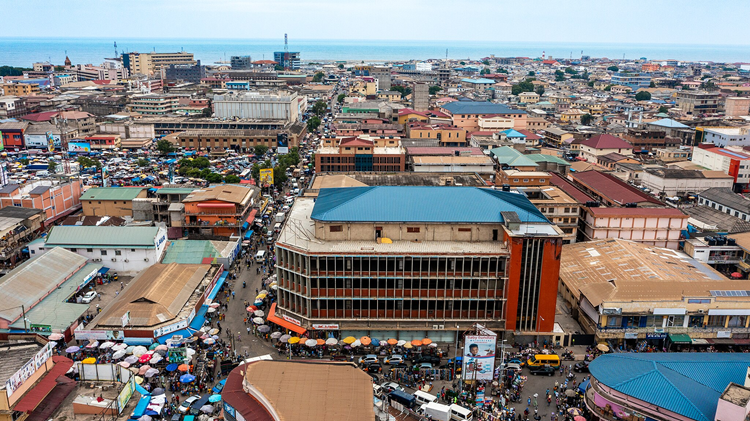COP27’s mixed bag dashes high expectations

Despite global setbacks, Africa has shown the promise of leadership towards a low-carbon economy.
Sharm el-Sheikh is a famous venue for agreements and is sometimes referred to as the ‘City of Peace’ with its history of Palestine-Israel summits. Those peace deals were temporary, with only baby steps forward. Did the November 2022 United Nations Climate Change Conference (COP27) follow suit?
The build-up to the ‘Africa COP’ promised better deals for the developing world. The vision of a ‘moment of transformation in climate action’ was set by COP27 president Sameh Hassan Shoukry.
As the desert dust settles, a mixed bag of results is evident. An important outcome was the positive movement on loss and damage. But there was a lack of progress on mitigation targets, and despite the promises around climate adaptation, the reality remains unsure.
The highlight was the agreement on the Loss and Damage Fund, which covers droughts, damage from floods, storms, wildfires and heatwaves, and the negative impacts of sea level rise. It was an enormous struggle just getting this onto the COP27 agenda, but the developing country group, including the African Group of Negotiators, succeeded. Hopefully this achievement won’t be watered down in negotiations on the fund’s modalities, and the high historical emitters will meet their commitments.
The build-up to the ‘Africa COP’ promised better deals for the developing world
The conference was expected to move forward on vital mitigation targets – especially how to maintain the emissions goal of 1.5oC by 2100. This was to be achieved with a new global deal and stringent net-zero targets for all countries. But it ended badly, with the European Union delegation threatening to walk out due to the lack of progress.
According to analytical platforms such as the Climate Action Tracker, it’s a difficult course to a +2.7oC world. Some might even say we took a step backwards by endorsing low-emissions fuels in the Sharm el-Sheikh Implementation Plan.
Another lowlight was COP27’s promise of more funding and resources for climate adaptation. The US$100 billion pledge remains unfulfilled, and the vision of that increasing to a much higher number is still a mirage.
Discussions with old hands at the climate negotiations yielded many perspectives. The dominant ones were the aspirational versus the pragmatic lenses. The high hopes of the former – that COP27 would mark a greater appreciation of the science and devastating impact of climate change – were dashed.
Just getting the Loss and Damage Fund onto the agenda was an enormous struggle
Before COP27, the first three instalments of the 6th Assessment Report outlined the basis of climate change, adaptation and vulnerability, and mitigation. The reports provided clear scientific consensus that global warming was due to greenhouse gas emissions generated by human activity. And that we are already 1.2oC above preindustrial levels, and the window for mitigation is rapidly closing.
It is also clear that Africa contributes little to greenhouse gas emissions, yet is most vulnerable. The World Bank’s Groundswell report estimates that intra-African migration will exceed 86 million by 2050. The United Nations’ International Organization for Migration noted that in 2021 alone, disasters saw the internal displacement of 23.7 million people.
Environmental damage caused by climate change leads to water insecurity, negatively affecting agriculture and food security. Higher temperatures push up vulnerability indices for infectious diseases. These factors restrict development options and increase competition for resources leading, in some cases, to conflicts like those between herders and crop farmers.
Such conflict escalation becomes attractive to violent extremists and armed groups, prompting a special session in 2021 of the African Union Peace and Security Council on the climate-development-security nexus. For Africa, climate change is both a development and security issue.
Better climate resilience could put Africa on a path to sustainable development and economic recovery
Those in the aspirational camp hoped for a much deeper appreciation of these factors by the COP27 negotiators. António Guterres offered a stark choice at the conference’s opening. We could make brave decisions and commitments in a global climate solidarity pact or continue the current lethargy and indifference into a collective suicide pact. Those coming into COP27 with high hopes leaned towards the latter, saying the conference did not deliver sufficiently.
The pragmatists had a more positive view. They argued that this was as good as it could get considering the global impact of Russia’s war in Ukraine. The net effect has been a rapid decline in European energy security and increased energy costs worldwide. Many advanced economies face financial crises, with a limited ability to honour pledges, let alone agreements to help the global south deal with climate change impacts.
Although the global green transition has had a few setbacks, Africa has shown emerging leadership in the movement to a low-carbon economy. The South African Just Energy Transition Partnership unlocking almost R150 billion in grants, concessional loans and other investment access is a major boost. The strides with green hydrogen in Namibia, Morocco’s solar farms, and planned massive wind farms in Kenya are further examples of a continent on the move.
Better climate resilience could place the continent on a sustainable development pathway and a track to economic recovery on the back of global green competitiveness. Without this, Africa will sink further into the quicksand of lower energy security, decreased global market access for our goods, and the hardships of an increasingly hostile climate-changed world.
This article was first published in ISS Today.
Image: Mohammed Abed/AFP






